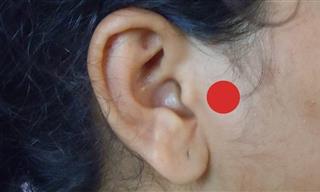Despite its association with frequent trips to the bathroom, fiber is no laughing matter. Aside from efficient bowel movements, this nutrient can also reduce the risk of heart disease, strokes, cancers, obesity, kidney stones, and hypertension. Unfortunately, it’s estimated that less than 5% of Americans get the recommended daily amount of fiber each day. Below you’ll find 25 interesting facts about this essential nutrient.
1. Fiber is a non-digestible, plant-derived carbohydrate that includes the cell wall and storage parts of plants. Fiber passes through the digestive tract virtually intact and has little caloric value.
2. There are two types of fiber: soluble fiber which dissolves in water, and insoluble fiber which does not. Both types are important for maintaining optimal health. They occur naturally in foods such as nuts, vegetables, fruits, beans, seeds, and whole grains.
3. Most of us only eat about 15 grams of fiber a day. However, the American Dietetic Association recommends eating 20-35 grams of fiber per day.
4. Fiber is found only in plant foods. Meat and dairy products contain no fiber at all.
5. Insoluble fiber attaches to waste in the body, making it bulkier and easy to get rid of. This helps to prevent heart disease, hemorrhoids, and some types of cancers.
6. Soluble fiber slows down the absorption of fats and sugars in the blood, helping to regulate blood sugar levels. It also binds with and removes cholesterol from the blood stream, lowering LDL, or “bad” levels of cholesterol.
7. Hippocrates, the Father of Medicine, was one of the first physicians to argue for the benefits of fiber in the form of bran to keep the large intestines healthy.
8. Cooking does not remove fiber from food. Furthermore, drying food does not remove it either.
9. If people doubled their intake of fiber, they could significantly reduce their risk of colon cancer.
10. Research has shown that fiber has protective effects against breast cancer.
11. For a food to be considered a good source of fiber, it must have at least 3 grams of fiber per serving. If it has at least 5 grams of fiber per serving it’s considered an excellent source of fiber.
12. The digestive tract is an astonishing 28 feet long. Fiber helps to move waste along this large muscle.
13. Too much fiber is a bad thing. For example, if a person consumes more than 50 grams of fiber a day, they might start to suffer from bloating and diarrhea, which can interfere with the body’s absorption of other important minerals.
14. Science has shown that those who eat the most fiber have a much lower risk of dying from any cause. The National Cancer Institute concludes that for every 10-gram increase in fiber intake, the risk of death drops by 15% in women and 10% in men.
15. The more fiber a person has in their diet, the more water they will need to keep the fiber moving through their digestive tract.
16. Foods rich in fiber help to prevent diverticulosis, which is the formation of intestinal pouches.
17. To determine how much fiber a child needs each day, take their age and divide it by 10. For example, a 7-year-old needs about 0.7 ounces of fiber per day.
18. While products such as crackers, cookies, drinks, ice cream, and sugary cereals have started to include fiber to make them appear healthier, naturally occurring fiber typically has the best health benefits.
19. The most common abdominal emergency in the Western World is appendicitis. In America alone, over 300,000 appendixes are removed each year. A diet low in fiber increases the risk of appendicitis.
20. Symptoms of low fiber intake include unhealthy bowel movements such as going less than two to three times a day. Additionally, a bowel movement should never hurt or lead to bleeding.
21. Fruit and vegetable juices have less fiber than whole fruit and veg. This is because the skin is removed when making the juice.
22. Research shows that eating an additional 14 grams of fiber per day results in a 10% decrease in calorie intake. Furthermore, long-term studies show that people who eat fiber rich foods tend to be slimmer than those who do not.
23. Historians note that the emergence of common diseases occurred in England and the United States after 1890, when a new milling technique removed fiber from whole-grain flour to produce white flour.
24. Doctors suggest that if somebody who is currently not eating enough fiber would like to increase their fiber intake, then they should increase it slowly to avoid bloating and gas.
25. Fiber is often referred to as “nature’s broom” as it helps to clean out the intestinal tract.
Source: factretriever
Images: depositphotos
 Go to BabaMail
Go to BabaMail




























